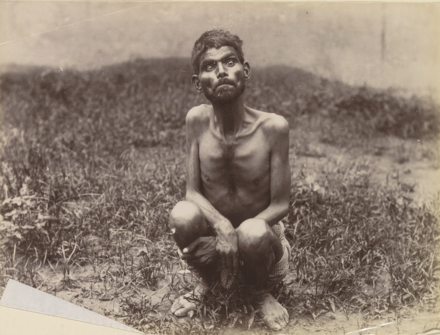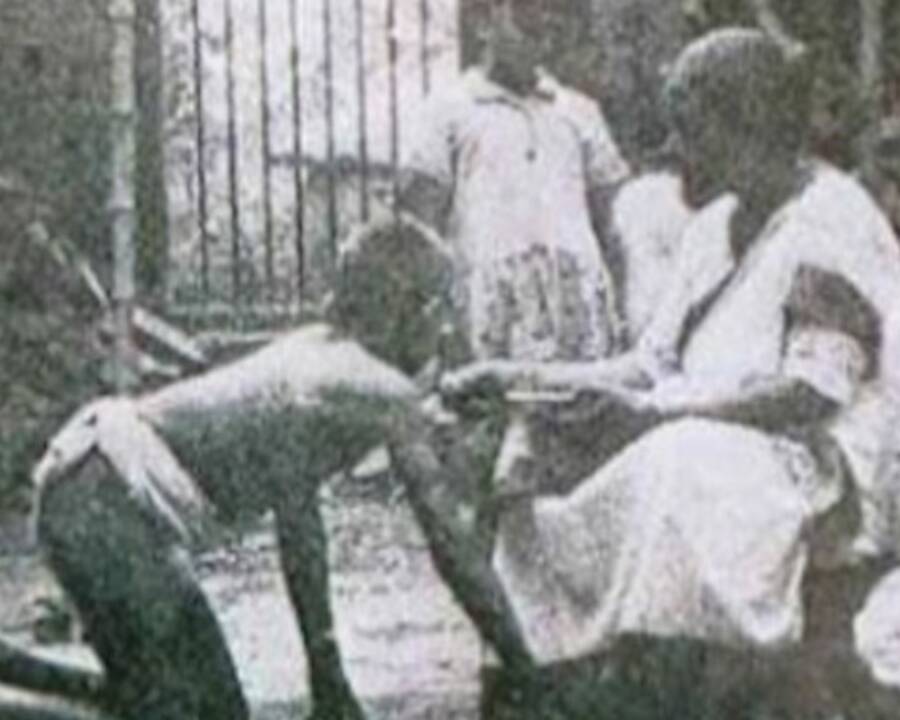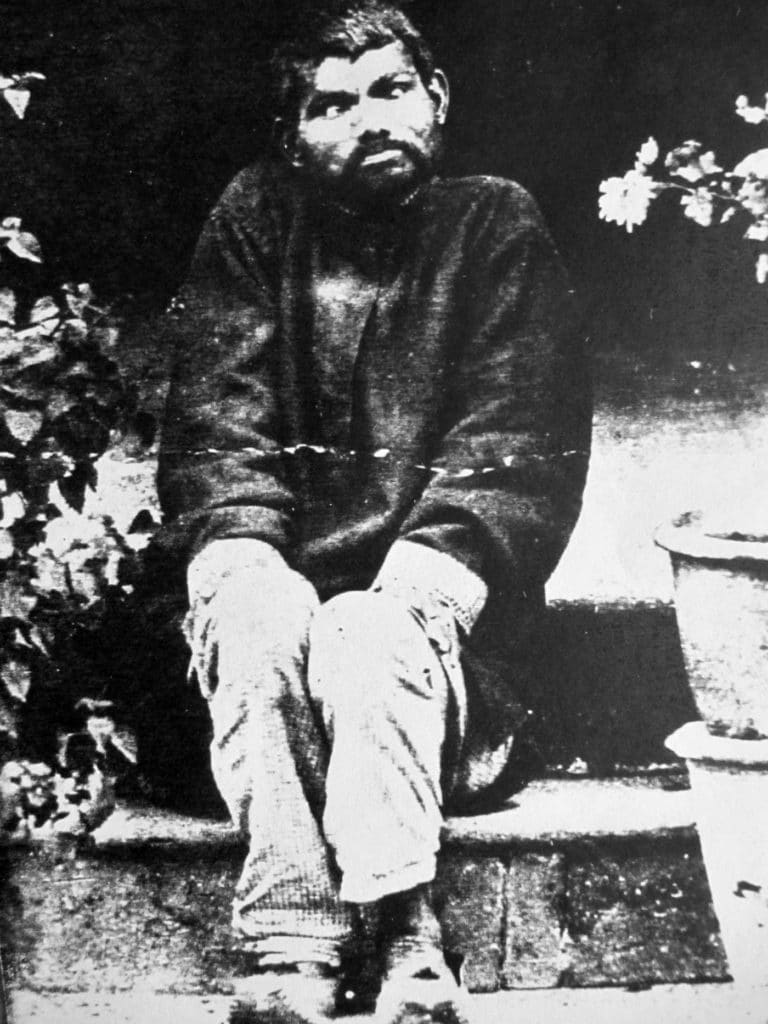Last updated on September 13th, 2024 at 05:46 am
Dina Sanichar was born in the jungles of India and spent his early life living among animals before being found and returned to human society.
This strange story would later become Rudyard Kipling’s inspiration for the character of Mowgli in the Jungle Book, albeit an uplifting and whitewashed version.

The Wolf Boy Is Found
Dina Sanichar’s story began in the 1800s when he was just a young boy. In 1867, a group of hunters tracked a wolf in the jungles of Uttar Pradesh, India. The wolf led the hunters to a small cave, where they found a naked boy huddled in the corner.
Upon trying to communicate with the boy, they realized that he could not answer them, nor did he seem to understand their questions. With each passing moment, it became more evident that the “wolf boy” was a Feral Child.
It was apparent that the wolves raised the boy, and despite the odd nature of his upbringing, he was not the first Feral Child.
Back then, Feral children were typical in India, including panther children, chicken children, dog children, and even gazelle children.
A common trait with Feral children was their inability to walk on two legs. Almost always, they walked on all fours and struggled to walk correctly.
The hunters who found Dina took him back to their village, where they showed him off to the locals. The villagers were both fascinated and terrified by the boy raised by wolves.
Next, the hunters took Dina to the Sikandra Mission Orphanage in Agra. They gave him the name Sanichar, which means “Saturday” in Urdu, because that was the day he was found.
Dina Sanichar’s Early Years
Although Dina was given a name and a roof over his head, the orphanage was not the best place for him. The staff at the orphanage did their best to care for Dina, but they didn’t know how to communicate with him properly.
Father Erhardt, the head of the orphanage, felt that even though he considered Dina, an imbecile, he showed signs of intelligence and critical thinking.
They also didn’t know how to care for his physical needs; the staff at the orphanage did their best to civilize Dina, but it was a difficult task.
His upbringing in the jungle was the only source of civilization that made sense to him.
He would often howl and bark like a wolf, leading the staff to believe he was trying to communicate with them.
A psychologist named Wayne Dennis noted that Feral children like Dina had little to no attachment to human beings and were unaffected by hot and cold temperatures.
Dina wore clothing, but he only ate meat and sharpened his teeth on bones like a wolf. At the same time, Dina seemed unable to speak a language, but his caretakers were hopeful that they could rehabilitate him.
Dina Sanichar’s Later Years
As Dina grew older, he began to show more human-like behaviors. He learned how to use the restroom, ate normally, dressed, walked upright, and even started wearing shoes.
However, the wolf boy continued to howl and bark, which led people to believe he was trying to communicate with them.
Dina would never learn to speak the human language, yet he developed a sense of understanding and could share in his way with the caretakers of the orphanage.

While the caretakers had limited success bonding with Dina, the “wolf boy” did form a bond with another feral child. The two children had much in common, and they quickly became friends.
They would often play together, and Dina would teach the other boy to hold a cup and drink out of it.
It was clear that Dina was more comfortable around other feral children than he was around humans. That never seemed to change, even as Dina grew older.
Dina Sanichar’s Death
Despite spending the better part of 20 years at the orphanage, Dina made little more progress in his transformation to more human behavior.
For example, even though he ate from a plate, he would always smell his food first and never seemed to want anything but raw meat.
Unfortunately, dressing and walking upright weren’t the only human characteristics that Dina adopted in his time at the orphanage.

Oddly enough, Dina picked up the habit of smoking cigarettes from the caretakers. It’s not clear why he started smoking, but it’s speculated that he may have thought it made him look more human.
In any case, smoking took a toll on Dina’s health, as he developed a chainsmoking habit and eventually died of Tuberculosis in 1895. Sanichar lived a very short life and died at the age of 34.
What Does Dina Sanichar’s Life Teach Us About Civilization?
Dina Sanichar was a unique individual. He was raised by wolves and spent his formative years in the jungle. Even though hunters took him to an orphanage, he never really learned how to be human.
In some ways, Dina Sanichar will always be more wolf than man. You could try to take the boy out of the jungle, but you can’t take the jungle out of the boy. Dina Sanichar’s story tells us that civilization is learned, not something instinctive.
Dina Sanichar never learned how to be human, but he still impacted the world. His story teaches us that even the most ferals have the potential to civilize others and make the world a better place.
Yet, Dina’s story makes us question what it means to be human. What caused these children to become feral? Is it inherent in human nature or something that is learned?
Dina Sanichar’s story reminds us that we should never give up on anyone, no matter how feral they seem. There is always hope for rehabilitation and redemption.
It’s also a reason to consider society’s failings and question how children are raised. Are we doing enough to teach them about civilization? Or are we raising them in a way that makes them more likely to become feral?

